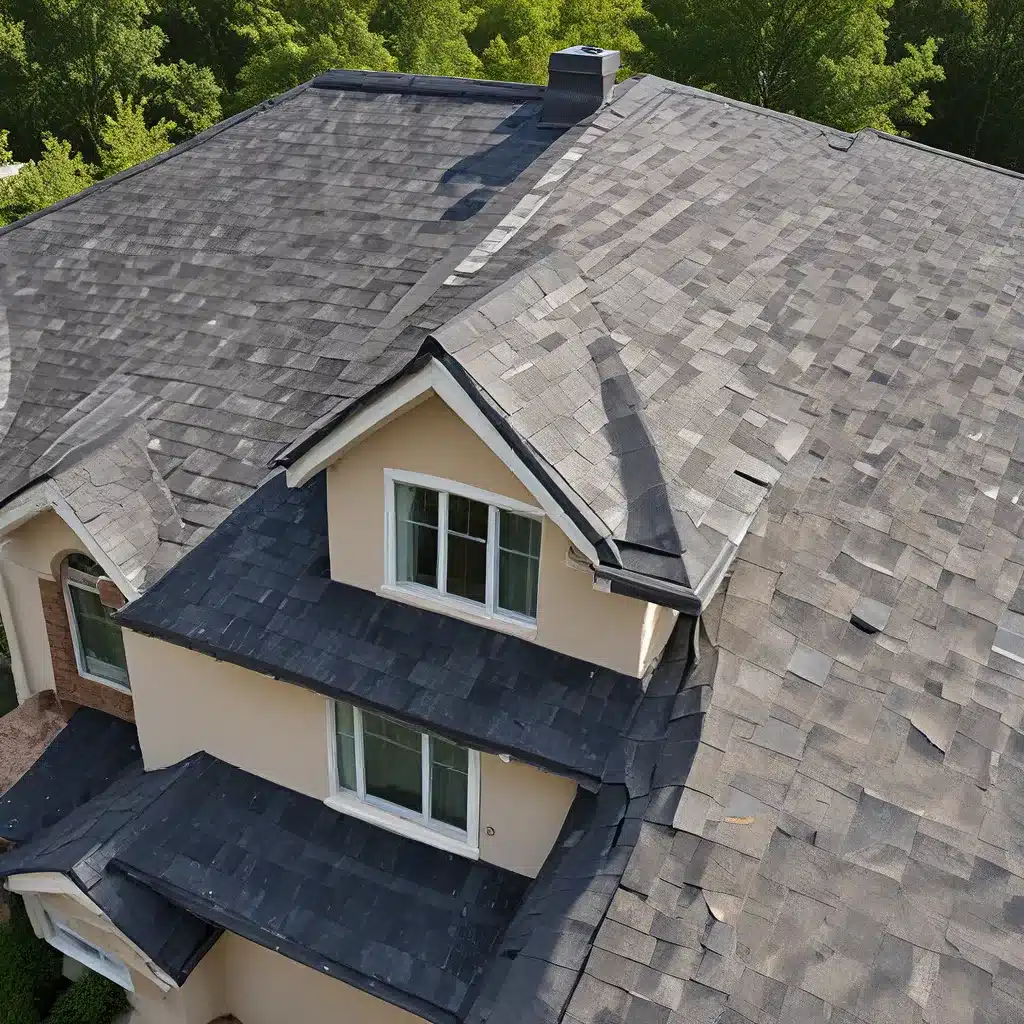
Have you ever wondered why the roofs on homes in the American South seem to weather the elements so much better than their counterparts up North? It’s not just a matter of aesthetics – there’s a whole science behind creating roofing systems that can stand strong against the unique challenges of the Southern climate. As a lifelong Southerner and DIY enthusiast, I’m here to share some insider tips on building a roof that can truly withstand the test of time.
Understanding the Southern Climate
The South is known for its hot, humid summers and mild, rainy winters. This means our roofs have to contend with a whole lot more than just snow and ice. We’re talking intense solar radiation, driving rain, and even the occasional hurricane-force winds. Traditional northern roofing materials like asphalt shingles just can’t keep up.
Biophilic design principles suggest that nature-inspired materials and techniques are the way to go for creating resilient, long-lasting roofs in the South. Think about it – the plants and animals that thrive in our region have evolved clever strategies for adapting to the harsh environmental conditions. We can take a cue from them when designing our own roofing systems.
Choosing the Right Roofing Materials
One of the biggest mistakes I see homeowners make is going with the cheapest, most generic roofing materials they can find. Sure, it might save you a few bucks upfront, but those bargain-bin shingles are no match for the Southern climate. Instead, look for roofing options that are naturally resistant to heat, moisture, and wind damage.
For example, metal roofing has become increasingly popular in the South, and for good reason. Metal panels are incredibly durable, fire-resistant, and can even help reduce energy costs by reflecting sunlight. Plus, the modern styles look way sleeker than those old-school tin roofs.
Another great option is clay tiles. These beauties have been keeping Mediterranean homes cool for centuries, and they work just as well in the sultry South. Clay tiles are naturally breathable and moisture-resistant, so they’re less prone to leaks and mold. And with their timeless aesthetic, they can add serious curb appeal to your home.
If you’re looking for something a little more natural, consider a slate or composite shingle that mimics the look of slate. These are some of the most durable roofing materials out there, with lifespans of 50 to 100 years. Sure, the upfront cost is higher, but you’ll save a ton in the long run by avoiding constant repairs and replacements.
Whatever roofing material you choose, make sure it’s rated for your local climate zone and carries a solid warranty. Skimping on quality now could lead to major headaches (and expenses) down the road.
Optimizing Your Roof Design
It’s not just the roofing materials themselves that make a difference – the overall design of your roof system is crucial for thriving in the Southern climate. Take a cue from the natural world and incorporate features that promote airflow and water management.
For example, a well-designed attic ventilation system can make a huge difference in keeping your home cool and controlling moisture buildup. By allowing hot air to escape and cool air to circulate, you can reduce the strain on your HVAC system and prevent issues like mold and mildew.
Strategically placed gutters and downspouts are also key for directing rainwater away from your home’s foundation. And don’t forget about the roof pitch – a steeper slope will help shed water more effectively, reducing the risk of leaks and pooling.
If you really want to get creative, consider integrating green roof or living roof elements. These systems incorporate native plants and grasses that not only look gorgeous, but also help insulate your home, filter rainwater, and reduce your energy needs. Talk about a win-win!
Maintaining Your Southern Roof
Of course, even the most meticulously designed roof won’t last forever without some TLC. Regular inspections and maintenance are essential for keeping your roofing system in top shape and catching any potential issues before they become major problems.
Make it a habit to climb up (or hire a professional) and visually inspect your roof at least once a year, preferably after the winter or summer seasons. Look for signs of damage, like missing or cracked shingles, clogged gutters, or rust on metal surfaces. Address any issues promptly to prevent them from snowballing.
And don’t forget about cleaning – a good roof wash every few years can go a long way in preserving its appearance and performance. Use a mild, eco-friendly cleanser and a soft-bristle brush to gently remove any built-up dirt, debris, or algae.
With a little proactive care, your Southern roof can become a durable, low-maintenance source of pride for your home. Embrace the elements and let nature guide your roofing decisions – your wallet (and the environment) will thank you.
Embracing the Future of Southern Roofing
As we look to the future, I’m excited to see how innovative roofing technologies and biophilic design principles will continue to transform the way we build in the South. Solar tiles, living roofs, and self-healing materials are just a few of the cutting-edge solutions on the horizon.
Researchers are also digging deeper into natural, non-toxic treatments that can protect wood and other organic roofing materials without harming the surrounding environment. It’s all part of a growing trend towards sustainable, nature-inspired construction that is better for both our homes and our planet.
So whether you’re tackling a new roof project or just looking to refresh an existing one, keep an open mind and embrace the elements. With a little creativity and a whole lot of Southern spirit, you can build a roof that truly stands the test of time.